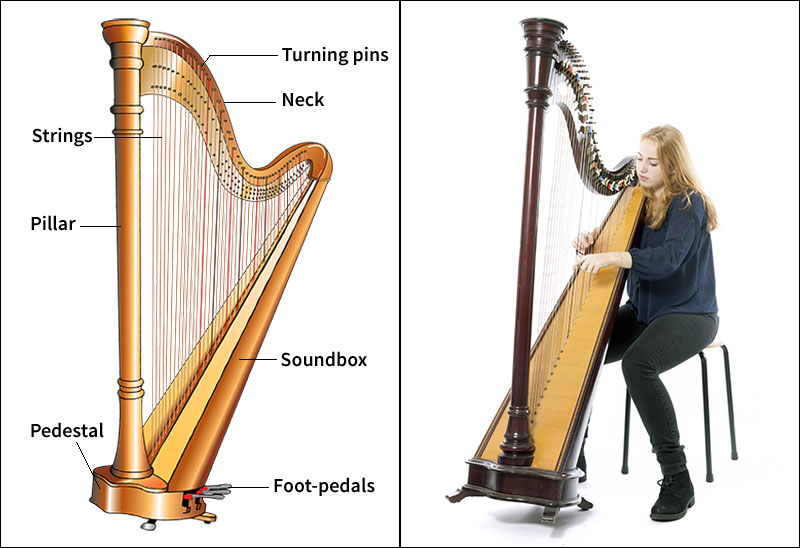Harp is one of the oldest known stringed instruments. The chief instrument in the harp family is the large concert harp. Smaller harps are often used in folk music.

The modern concert harp is a large, triangular wooden instrument about 70 inches (178 centimeters) tall. The wood is often gilded and decoratively carved. The harp rests on a base called the pedestal. A perpendicular column called the pillar rises from the front of the pedestal. A hollow soundbox, which amplifies the sound, projects at an angle from the rear of the pedestal. The pillar and the soundbox are joined at the top by a gracefully curved neck.
Forty-seven strings of different lengths and thicknesses are stretched between the neck and the soundbox. Tuning pins in the neck set the strings to the notes of the scale over a range of 61/2 octaves. Seven foot-pedals extend from the pedestal. When a pedal is depressed, it raises the pitch of its corresponding strings a half-tone or whole-tone, depending on the distance the pedal is depressed. This mechanism, called double action, enables the performer to play in any key or sequence of keys.
The performer sits with the harp between the knees, tilting it so it rests against the right shoulder. The player plucks the strings with the thumb and first three fingers of each hand and operates the pedals with the feet.
Early forms of the harp existed in several ancient Near Eastern civilizations. In Europe, the first harps appeared in the 700’s in Ireland, where the harp is now a national symbol.
See also Aeolian harp.
